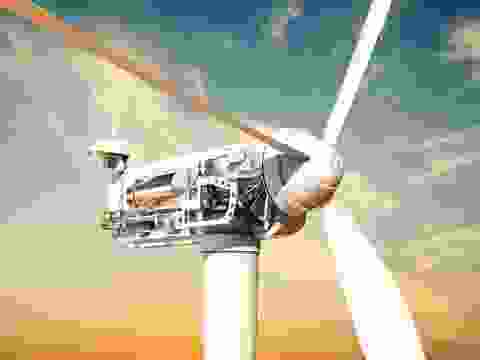Queesland
Critical minerals, policy, and the energy transition
The Energy Transition in Queensland
Queensland is undergoing a profound energy transformation, shifting from coal dependence to clean energy leadership. As Australia’s highest-emitting state, its decarbonisation trajectory holds national and global significance. Under the $26 billion Queensland Energy and Jobs Plan (QEJP), the state is targeting 70% renewable electricity by 2032 and 80% by 2035, supported by massive investment in solar, wind, grid infrastructure, hydrogen, and critical minerals. This transition is not only reshaping Queensland’s energy mix but also its industrial base, labour markets, and international trade strategy. From virtual power plants and green steel to pumped hydro and ammonia exports, Queensland is positioning itself as a renewable energy superpower. Yet the transition is not without tension—rising capital costs, community opposition, and political uncertainty continue to pose challenges. This report explores the drivers, risks, and opportunities of Queensland’s post-coal economy, highlighting its pivotal role in Australia’s energy future and the global race to net zero.
Decarbonising Queensland and the Post-Coal Economy
From coal reliance to renewable superpower
Queensland’s energy transition is among the most ambitious decarbonisation efforts in Australia. It combines the rapid rollout of renewable energy with targeted industrial policy, aiming to transform the state’s economy and energy systems. Historically the nation’s largest emitter of greenhouse gases, largely due to its reliance on coal, Queensland is now pursuing a $26 billion transformation under the Queensland Energy and Jobs Plan (QEJP).
Queensland’s electricity system has long been shaped by abundant coal reserves. In 2007–08, 88% of its electricity generation came from black coal. Major coal-fired power stations such as Gladstone (1,680 MW) and Stanwell (1,460 MW) supported energy-intensive industries including aluminium smelting and liquefied natural gas (LNG) processing. Gas provided around 10% of generation, while renewables accounted for just 2%, primarily from bagasse combustion in sugar mills. This heavy reliance on fossil fuels made Queensland Australia’s highest-emitting state, recording 171.7 million tonnes of CO₂-equivalent (MtCO₂e) in 2018, with 45% attributed to stationary energy.
As of 2020, Queensland’s total installed electricity generation capacity stood at 15,004 MW. This included 8,100 MW from coal, 3,000 MW from gas, and a growing portfolio of renewable energy assets. Powerlink, the state-owned transmission operator, manages a 1,700 km high-voltage network with 15,345 circuit kilometres of lines. This infrastructure was originally designed for centralised coal-fired generation. During a January 2024 heatwave, peak demand reached 11,005 MW, with average evening residential use hitting 4.16 kW in south-east Queensland. Although electricity demand is forecast to grow modestly at 0.6% per year, ageing coal infrastructure is proving increasingly unreliable. This was starkly demonstrated by the 2021 explosion at Callide Power Station, which triggered widespread blackouts across the state.
Queensland’s energy transformation reflects the challenges of decarbonising a resource-rich economy. While its renewable energy targets are consistent with the IPCC’s 1.5°C climate pathway, the success of this transition depends on addressing three major tensions: maintaining affordability during a capital-intensive build-out, balancing export ambitions with domestic industrial needs, and securing public support for significant land-use changes. The repurposing of coal-era infrastructure—such as ports and transmission corridors around Gladstone—into renewable energy assets will be a key test of Queensland’s ability to shift from fossil fuel dependence to global leadership in clean energy. With $26 billion committed and 64,000 jobs at stake, the coming decade will be crucial in determining whether the state can align ecological goals with economic realities.
Targets, investment, and workforce transition to a post-coal economy
The Queensland Energy and Jobs Plan (QEJP), launched in 2022, outlines a bold vision for the state's clean energy future. It sets clear targets to achieve 70% renewable energy by 2032, increasing to 80% by 2035. To meet these goals, the plan includes the development of 22 GW of new solar and wind capacity across 12 designated Renewable Energy Zones (REZs). It also allocates $4.5 billion to a Hydrogen Jobs Fund, supporting the development of hydrogen export corridors. Another key component is the conversion of ageing coal-fired power stations into Clean Energy Hubs, equipped with synchronous condensers and battery storage.
This large-scale transformation is expected to generate around 100,000 new jobs across Queensland. To ensure a smooth and equitable workforce transition, the QEJP includes a range of targeted measures. Among them is the Energy Workers’ Charter, which guarantees job redeployment for 3,000 workers from retiring coal plants into roles in transmission infrastructure, hydrogen production, and recycling.
To support this shift, the plan also includes $192 million in funding for new Technical Colleges in Townsville and Gladstone. These institutions will deliver specialist training in fields critical to the energy transition, such as turbine maintenance and grid cybersecurity. Furthermore, procurement rules require that at least 60% of materials and services for REZ projects be sourced from regional suppliers. This is designed to strengthen domestic manufacturing capacity and support economic development in key centres like Rockhampton and Mackay.
Complementing this policy framework is Queensland’s 2035 energy roadmap, which sets out a forward-looking strategy focused on technological convergence and industrial decarbonisation. As the state transitions away from coal, it is investing in a suite of innovative solutions to support clean growth and energy security.
One of the most promising developments is the deployment of Virtual Power Plants (VPPs), which aim to aggregate up to 4 GW of household battery capacity. These decentralised systems will use advanced trading algorithms, such as Tesla’s Autobidder, to optimise energy flows across the grid, helping households participate in energy markets while improving system resilience during periods of peak demand.
In parallel, Queensland is pioneering green steel production. Pilot projects at the Stanwell facility in Gladstone will use renewable hydrogen from the Central Queensland Hydrogen Project (CQ-H2) to reduce iron ore, targeting the production of one million tonnes of low-emissions steel annually by 2030. This represents a significant step towards decarbonising heavy industry and establishing Queensland as a global leader in green manufacturing.
Bioenergy is also being integrated into the state’s energy mix. At Tarong Power Station, sugarcane bagasse—a by-product of Queensland’s agricultural sector—will be co-fired with coal to reduce fossil fuel use by 15%. This approach makes use of local biomass resources to lower emissions while supporting system stability during the transition period.
Despite these advances, Queensland’s energy transition faces ongoing political, social, and economic challenges. While the state’s climate and energy ambitions are substantial, their implementation is shaped by shifting political priorities, community responses, and financial constraints.
In 2024, a change in government brought uncertainty to major energy projects. The newly elected Liberal National Party (LNP) government paused the Pioneer-Burdekin pumped hydro project, putting $14 billion in planned investment at risk. This decision raised alarm among industry stakeholders and environmental advocates, who considered the project vital for long-duration energy storage and future grid reliability.
Community resistance has also grown, particularly in regions like the Western Downs. Farmers have raised concerns about land-use conflicts with large-scale solar developments, while conservation groups have mounted legal challenges against wind farms that may affect native wildlife, such as the greater glider. These tensions highlight the complexities of securing social licence for renewable infrastructure, especially in ecologically sensitive or agriculturally productive areas.
Energy affordability remains another significant concern. Between 2022 and 2025, retail electricity prices increased by 34%, placing a disproportionate burden on regional and low-income households—particularly those without access to rooftop solar or battery storage. This growing energy divide underscores the importance of inclusive policy measures that ensure all Queenslanders can benefit from the transition, not just those able to invest in distributed energy technologies.
Queensland hosts some of the world's richest mineral-producing areas, particularly in the North West Minerals Province, which is known for deposits of copper, lead, zinc, nickel, cobalt, vanadium, tungsten, graphite, and rare earth elements. New projects are exploring secondary sources like mine tailings to extract critical minerals such as vanadium and cobalt.


Source: SFA (Oxford)
Renewable energy expansion: Scaling solar, wind, and storage
Queensland has become a national leader in solar energy adoption, with strong uptake across both residential and utility-scale projects. In the state’s south-east, 27% of detached homes now feature rooftop photovoltaic (PV) systems, reflecting strong community support and favourable solar conditions. However, large-scale solar farms are now the main drivers of growth, contributing significantly to the state’s decarbonisation efforts.
Among the most prominent projects is the Western Downs Green Power Hub, a 400 MW facility completed in 2025 and currently Australia’s largest operational solar farm. It uses one million bifacial panels to generate clean electricity for approximately 235,000 homes. The Punchs Creek Solar Farm, approved in 2024, is even larger, with 800 MW of solar capacity and a co-located 250 MW battery. This $1.2 billion project is expected to offset 1.44 million tonnes of CO₂ annually—the equivalent of removing 450,000 cars from the road. Another example is the Columboola Solar Farm, a 162 MW project using single-axis tracking technology to optimise generation in the high-yield Western Downs Renewable Energy Zone (REZ).
In total, Queensland has more than 14 GW of solar capacity in the pipeline, including 7.9 GW already approved and a further 2.85 GW announced. This positions the state to remain at the forefront of Australia’s clean energy shift.
Wind energy development has progressed more slowly than solar but is now gathering momentum. Major inland and coastal wind projects are under construction or recently approved, bringing much-needed diversity to Queensland’s renewable mix.
The MacIntyre Wind Precinct is a standout development, consisting of 180 Nordex turbines with 230-metre hub heights and a total capacity of 1,026 MW. Once operational in 2024, it will supply power to approximately 650,000 homes. The Coopers Gap Wind Farm, one of the largest in the country, has been operational since 2019 and includes 123 Siemens Gamesa turbines spread over 36,600 hectares. A more recent addition, the Mount Hopeful Wind Farm (400 MW), has been approved near Gladstone. Its elevated monopile foundations were specifically designed to minimise impacts on greater glider habitats, demonstrating a more environmentally sensitive approach to project design.
Queensland’s wind development pipeline now exceeds 3 GW, with targeted capacity factors above 40% in areas such as the Southern Downs and Darling Downs. This expansion is expected to complement solar generation and support a more balanced and resilient energy mix.
As renewable penetration increases, storage and grid modernisation have become critical to system reliability and flexibility. Queensland is investing heavily in both battery and pumped hydro storage to manage the intermittency of solar and wind.
Two major battery projects, the Stanwell Mega Battery (300 MW/1,200 MWh) and Tarong Battery (300 MW/600 MWh), are being built using Tesla Megapacks and will provide evening peak-shaving capabilities. Meanwhile, the Wivenhoe Pumped Hydro facility (570 MW) continues to provide 24-hour dispatchability, and the proposed Pioneer-Burdekin project, at 5 GW, is poised to become the largest pumped hydro scheme in the Southern Hemisphere.
Grid investment is equally critical. Queensland has allocated $8.5 billion to strengthen its transmission system, including the landmark CopperString 2.0 project. This 1,100 km transmission line will link Mount Isa to Townsville and unlock up to 6 GW of renewable energy exports by connecting isolated energy resources to the national grid.
However, the pace of this transformation is not without obstacles. Technical and economic hurdles threaten to slow momentum just as Queensland enters a decisive decade of transition.
Grid congestion is a growing issue, particularly in the Darling Downs, where solar curtailment reached 12% in 2024 due to voltage instability. Without urgent investment in network upgrades, additional generation risks being stranded.
Capital costs are also rising. Higher interest rates have driven up the levelised cost of solar from $45/MWh in 2022 to $68/MWh in 2025. This has contributed to delays in final investment decisions, especially for larger projects.
Compounding these challenges are supply chain bottlenecks. In 2024, wait times for key components such as Siemens Gamesa turbines stretched to 28 months, delaying the delivery of the MacIntyre precinct by nearly a year. These constraints underscore the importance of long-term planning, local manufacturing capacity, and policy certainty to maintain Queensland’s renewable energy momentum.
Hydrogen economy: Positioning as a global export hub
Queensland is rapidly positioning itself as a global leader in renewable hydrogen production and export. At the centre of this strategy is the Central Queensland Hydrogen Project (CQ-H2), a flagship initiative designed to scale green hydrogen output while unlocking significant trade and employment opportunities. The project aims to produce 800 tonnes of renewable hydrogen per day by 2031, establishing a globally significant supply base.
The CQ-H2 development includes several integrated components. At its core is the Aldoga Production Facility, which will house 2.24 GW of electrolyser capacity powered by 7 GW of dedicated solar and wind generation. This clean energy input will drive large-scale electrolysis, enabling consistent and high-volume hydrogen production.
To facilitate exports, the project includes a 23-kilometre hydrogen pipeline and liquefaction facility in Gladstone. This facility will convert the gas into 400 tonnes of liquid hydrogen (LH₂) per day for international shipment, with a particular focus on the Japanese market. Additionally, in partnership with Incitec Pivot, the project will produce 1.2 million tonnes of green ammonia per year, enabling a 90% reduction in emissions associated with domestic fertiliser production.
The project is supported by a $117 million Front-End Engineering Design (FEED) study, funded by the Australian Renewable Energy Agency (ARENA) and Queensland’s Hydrogen Jobs Fund. By 2035, it is expected to generate $17.2 billion in export value and create 8,900 direct and indirect jobs, positioning Central Queensland as a major player in the global hydrogen economy.
Queensland’s hydrogen ambitions extend beyond CQ-H2. The state’s existing liquefied natural gas (LNG) export infrastructure will be leveraged to open new markets across the Asia-Pacific. Under its global export strategy, Queensland aims to become a long-term supplier of green fuels to key trading partners.
Agreements are already taking shape. Japan is set to receive 200,000 tonnes of liquid hydrogen annually from 2029, transported by Kawasaki Heavy Industries’ specialised hydrogen carriers. Meanwhile, Singapore has committed to importing green ammonia from Queensland to fuel combined-cycle gas turbine (CCGT) plants operated by Keppel, under a 20-year offtake agreement.
Critical minerals found in Queensland
The Queensland Government has invested $315 million into its Critical Minerals Strategy to accelerate exploration, mining, processing, and manufacturing industries within the state. This includes initiatives like the Critical Minerals Investor Hub to attract global investment and promote downstream value chains.
Queensland's Critical Minerals Resources

Source: State of Queensland




Meet the Critical Minerals team
Trusted advice from a dedicated team of experts.

Henk de Hoop
Chief Executive Officer

Beresford Clarke
Managing Director: Technical & Research

Jamie Underwood
Principal Consultant

Ismet Soyocak
ESG & Critical Minerals Lead

Rj Coetzee
Senior Market Analyst: Battery Materials and Technologies

How can we help you?
SFA (Oxford) provides bespoke, independent intelligence on the strategic metal markets, specifically tailored to your needs. To find out more about what we can offer you, please contact us.
























